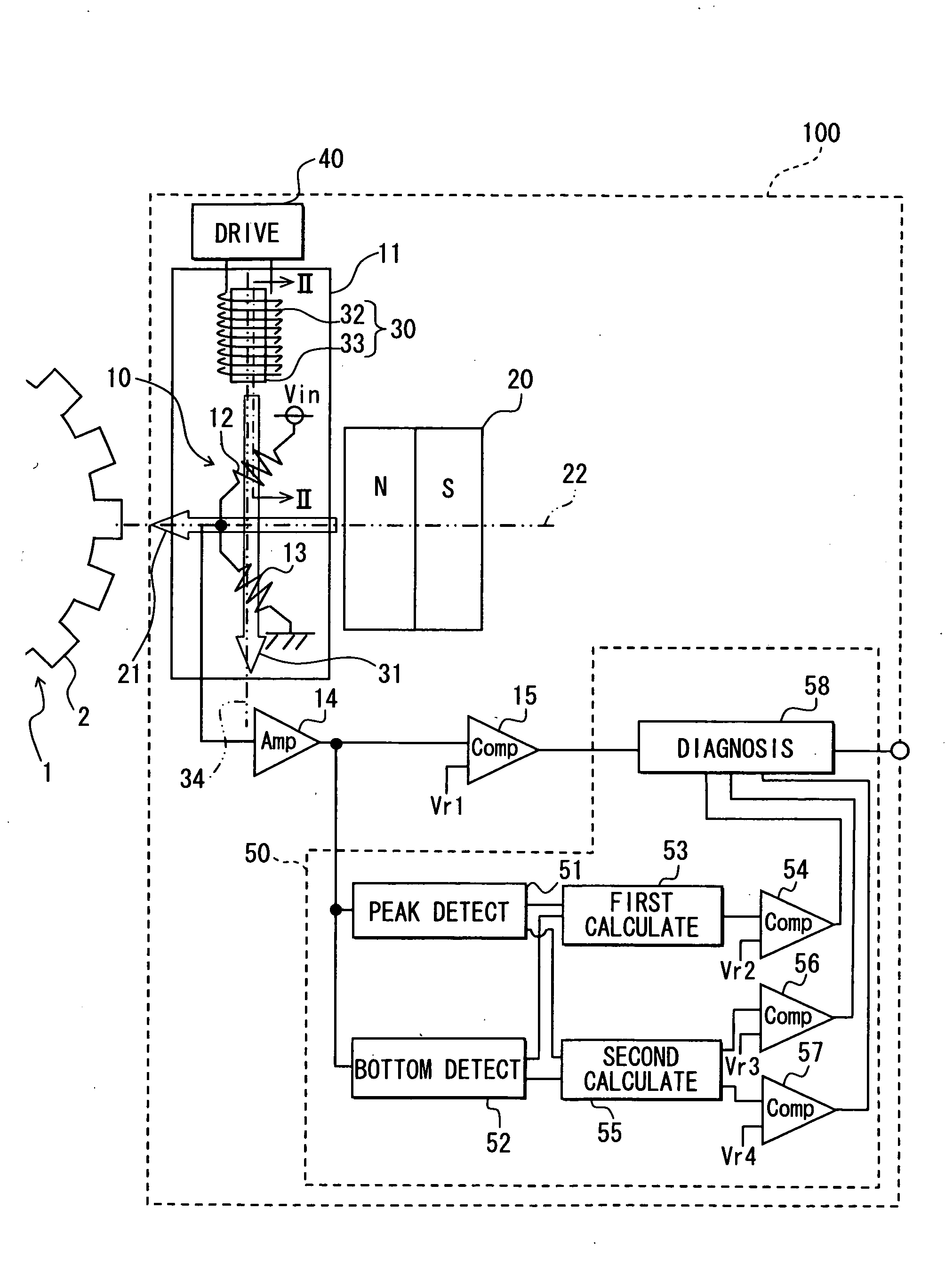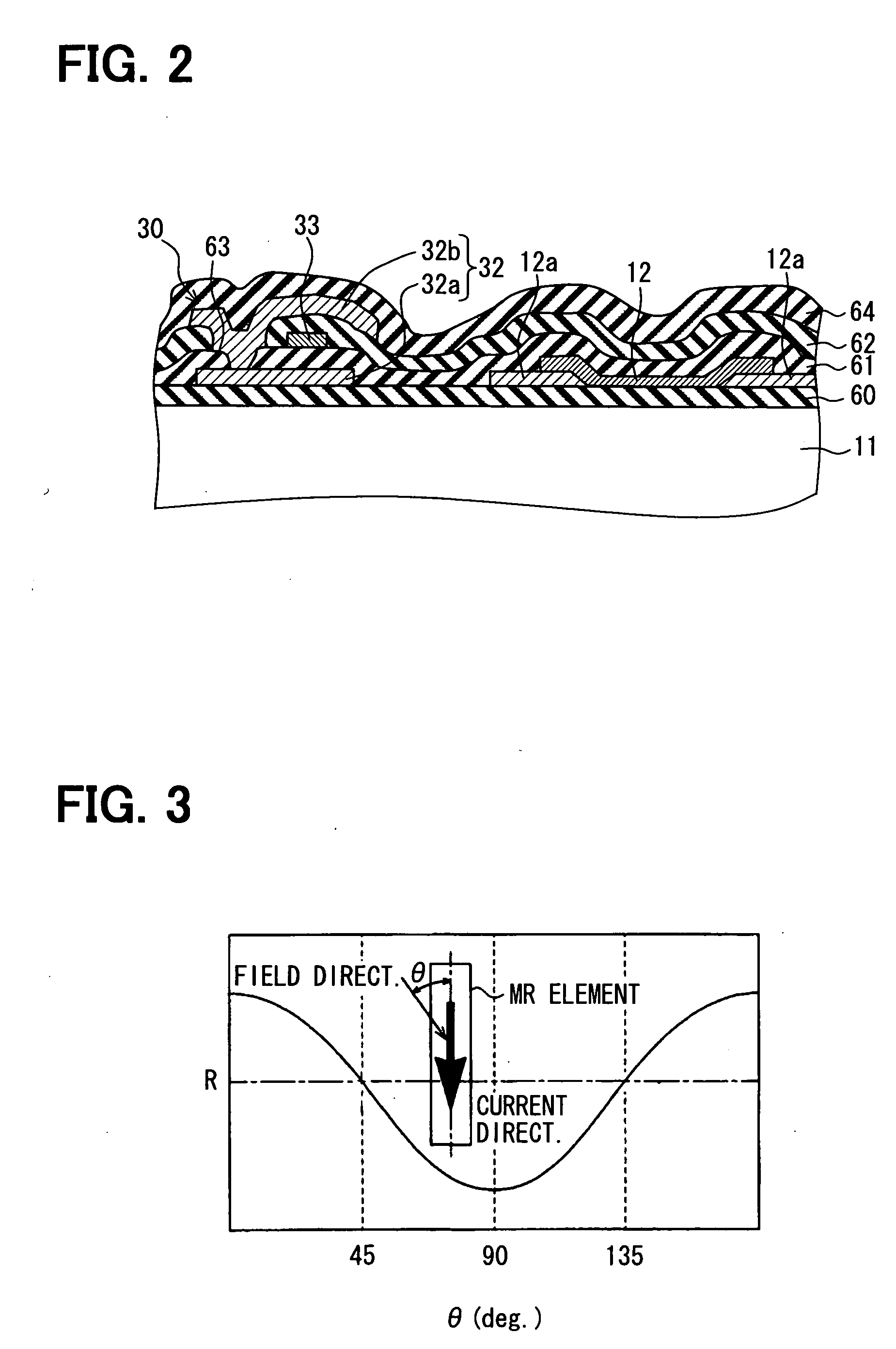Rotation detection apparatus
a detection apparatus and rotation detection technology, applied in the direction of electrical/magnetically converting the output of the sensor, galvano-magnetic devices, instruments, etc., can solve the problems of reducing sensitivity, the rotation detection apparatus cannot perform self-diagnosis to determine whether there is a failure, and the magnetic sensor cannot perform self-diagnosis to determin
- Summary
- Abstract
- Description
- Claims
- Application Information
AI Technical Summary
Benefits of technology
Problems solved by technology
Method used
Image
Examples
first embodiment
Modifications of First Embodiment
[0063]The first embodiment can be modified in various ways, examples of which are described below. In the first embodiment, after calculation of the potential difference ΔV at S40, the potential difference ΔV is compared to the predetermined threshold at S50. Further, when the potential difference ΔV is greater than or equal to the predetermined threshold, the middle voltage Vmid is calculated at S60, and the middle voltage Vmid is compared to the predetermined threshold at S70. Alternatively, the calculation of the middle voltage Vmid and the comparison of the middle voltage Vmid to the predetermined threshold may be performed prior to or parallel to the calculation of the potential difference ΔV and the comparison of the potential difference ΔV to the predetermined threshold.
[0064]In the first embodiment, both of the peak and bottom values of the sensor output are detected, and the self-diagnosis is performed to: check the presence of the sensitivi...
second embodiment
[0065]A second embodiment is described below with reference to FIGS. 9 to 12. FIG. 9 is a graph illustrating sensor output in a normal state and an offset failure state. FIG. 10 is a diagram illustrating a rotation detection apparatus according to the second embodiment. FIGS. 11A and 11B are diagrams each illustrating directions of superposition magnetic fields for cases where a forward electric current and a reverse electric current are applied. In FIG. 11A, the direction of the bias magnetic field 21 is generally parallel to the magnetic center line. In FIG. 11B, the direction of the bias magnetic field 21 is inclined clockwise at an angle θ1 with respect to the magnetic center line. FIG. 12 is a flow chart of a self-diagnosis method according to the second embodiment. Between the first and second embodiments, like parts refer to like reference numerals.
[0066]The rotation detection apparatus 100 of the present embodiment can perform self-diagnosis thereof to determine whether ther...
PUM
 Login to View More
Login to View More Abstract
Description
Claims
Application Information
 Login to View More
Login to View More - R&D
- Intellectual Property
- Life Sciences
- Materials
- Tech Scout
- Unparalleled Data Quality
- Higher Quality Content
- 60% Fewer Hallucinations
Browse by: Latest US Patents, China's latest patents, Technical Efficacy Thesaurus, Application Domain, Technology Topic, Popular Technical Reports.
© 2025 PatSnap. All rights reserved.Legal|Privacy policy|Modern Slavery Act Transparency Statement|Sitemap|About US| Contact US: help@patsnap.com



